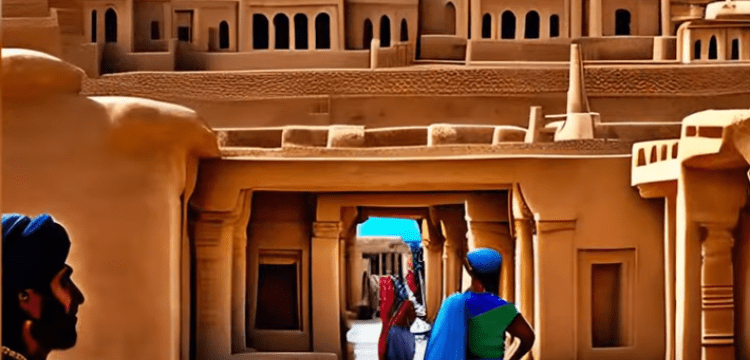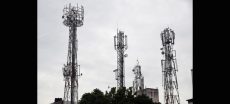[vc_row][vc_column][vc_column_text dp_text_size=”size-4″]For quite some time, artificial intelligence (AI) has been a popular buzzword. It is a term that is commonly used to describe machines, computer-controlled robots, and software systems that perform intelligent tasks such as learning, planning, reasoning, and interacting in order to simulate the natural intelligence displayed by humans and animals. While the rest of the world is obsessed with artificial intelligence (AI) avatars of themselves, an artist from a remote village in Pakistan’s southern Sindh province is making headlines for using cutting-edge technology to visualise the lives of people in Mohenjo Daro’s lost civilization.

Rehmatullah Mirbahar, a computer operator at the Thatta district health department who learned how to create art using AI tools through websites and YouTube tutorials, was surprised by the overwhelming positive response to his art and images of Mohenjo Daro.
According to Mirbahar, artificial intelligence was an excellent choice for the project because it could generate results based on publicly available online data about a location or its people, and where the results did not match reality, a human mind could intervene.
Also Read: Google search will soon include Chatbot AI: CEO Google
“Whatever came to my mind about Mohenjo Daro, I reimagined [all of that] through AI. It gives fifty or sixty percent results based on the data it has and [therefore] it needs modification … [We have to look] at how the faces of people appear, we have to fix their faces, have to change their colors, and the rest of the modifications are done with the help of AI. Many people there should be a river that flowed here,’ ‘there should be greenery there,’ so, in the future, I will update this to Mohenjo Daro version two. I will fix the mistakes being pointed out in this version,” Mirbahar said.
The 34-year-old was inspired to visualise the ancient city of Mohenjo Daro and its people after spending three months learning AI. Learn about the area’s historical architecture, culture, and religion through photography in the ruins of the lost city and his own knowledge.
“When I first created these images, I did not upload them because I didn’t think people would like them,” Mirbahar told Arab News. But then I decided to upload them, and I can’t believe how popular they became. The response had been overwhelming. There have been calls from Germany, the United States, and India,” he said, sitting at his computer in a small room in his office building in Makli.
The global AI software industry is rapidly expanding. According to Statista, it is expected to reach $126 billion by 2025. It is regarded as an economic growth engine and the next big disruptor.
Many countries have created AI frameworks and policies to support education programmes and research and development (R&D) centres in order to accelerate technological advancements and economic growth.
China’s “Next Generation Artificial Intelligence Development Plan,” the US executive order on “AI leadership,” and “AI Made in Germany” are just a few examples. Pakistan should follow suit and invest in programmes that foster youth interest in AI and modern technologies. This entails investing in education, research, and industry readiness training programmes.
After all, AI has enormous potential in Pakistan, with applications ranging from solving local problems in agriculture, governance, climate change, and manufacturing to creating tech unicorns and services firms specialising in hi-tech/AI software exports.
In fact, a few research labs, companies, and startups are already making strides in the AI space and contributing to the global tech ecosystem. For example, a group of professors at Information Technology University (ITU) Lahore are solving impactful problems and publishing their research at top-tier AI conferences.
Mirbahar giggled as he remembered how his family scolded him nearly two decades ago for buying a computer, something they believed was a waste of money. “My family scolded me a lot [saying] what are you doing, you have done wasteful spending,” he said.
“But whatever I am today is because of this computer, and my family members are also happy,” the artist added.[/vc_column_text][/vc_column][/vc_row]











